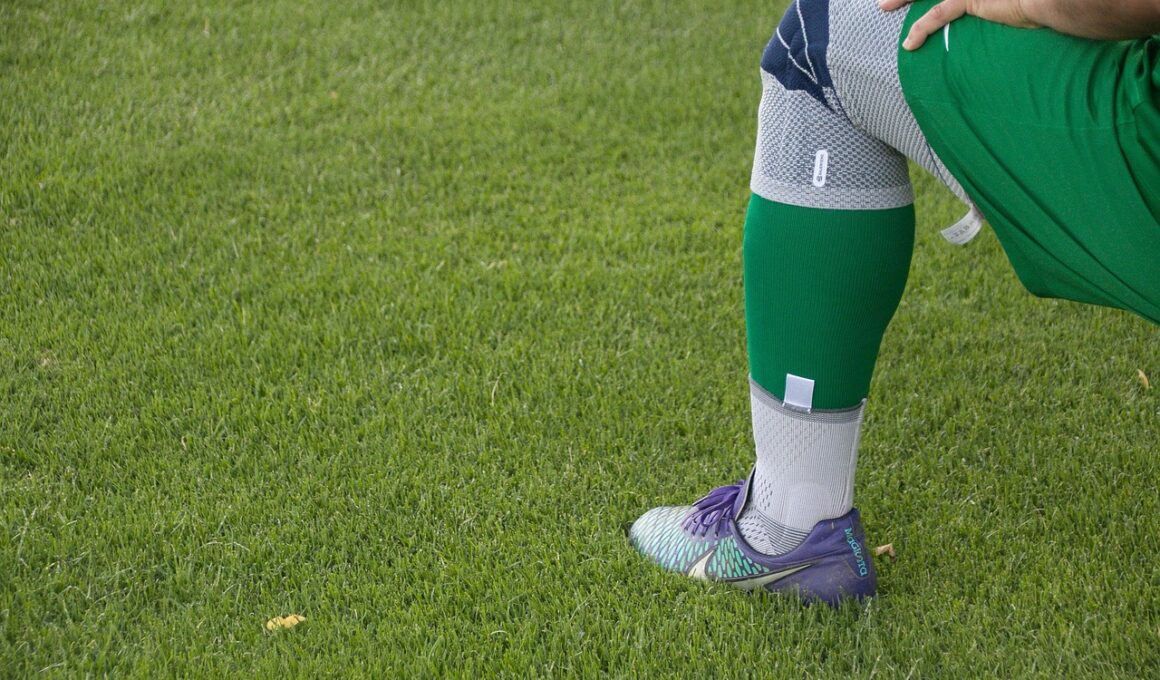Common Injuries in Martial Arts Competitions and How to Prevent Them
Martial arts competitions are thrilling events that showcase skill, discipline, and dedication. However, these competitions can also lead to a range of injuries, some of which are quite common among participants. By understanding the potential injuries, competitors can take proactive steps to minimize risks. Common injuries in martial arts typically result from high-impact actions, including kicks, punches, and throws. Injuries may include sprains and strains, fractures, bruises, and concussions. It’s crucial for participants and coaches to recognize signs of injury early to prevent worsening conditions and ensure overall safety. Adequate warm-ups and strength training can help participants prepare their bodies for the physical demands of competition. Additionally, participants must engage in proper techniques and training methods to minimize the chances of injury during competition. Coaches should emphasize the importance of maintaining composure and following safety protocols during matches to reduce incidents. A solid foundation in self-defense and martial arts techniques not only enhances performance but also promotes a safer competitive environment for all involved. Staying educated on safety measures will lead to a fruitful experience in martial arts competitions that centers on respect and personal growth.
Understanding Common Injuries
In martial arts competitions, injuries can occur from various actions, including high-impact movements and improper techniques. Sprains and strains are particularly common as competitors often push their bodies to the limit. A sprain is an injury to a ligament, while a strain affects muscles or tendons. Both injuries can result from sudden twists or impacts experienced during sparring or grappling. Other prevalent injuries are fractures, which often arise from insufficient protective gear or executing techniques poorly. Bruises may seem minor but can significantly hinder performance during competition. Concussions are another serious concern in martial arts, as head injuries can have long-lasting impacts. Understanding the types of injuries that can arise during competitions emphasizes the importance of safety precautions. Participants should wear appropriate protective gear, such as helmets and mouthguards, to reduce injury risk during intense matches. Additionally, they must practice proper techniques and avoid reckless behavior that can lead to serious accidents. Following these guidelines helps competitors enjoy their experience while focusing on skill improvement.
One of the most effective ways to prevent injuries in martial arts competitions is through proper training. Adequate training prepares the body for the demands that competitions impose. Participants should focus on flexibility, strength, and conditioning to enhance their physical capabilities. Stretching before and after each training session can improve flexibility, helping to prevent muscle strains during matches. Furthermore, strength training can enhance muscle resilience, which is critical for reducing the likelihood of injuries such as sprains and fractures. Conditioning is equally as important; it helps athletes build endurance, reducing fatigue during competitions and the associated injury risk that comes with it. Additionally, competitors should familiarize themselves with the rules and techniques specific to their martial art to avoid unnecessary risks. Practicing within a safe environment, under the supervision of an experienced instructor, cultivates a culture of safety and skill. Participants must also learn to listen to their bodies and avoid pushing through pain, as this can lead to serious injuries. Adopting a comprehensive training approach not only elevates performance but significantly enhances safety during competitions.
Importance of Protective Gear
Using the proper protective gear is vital for participants in martial arts competitions. Protective gear serves as a buffer against physical impact, reducing the likelihood of injuries. Essential items include headgear, mouthguards, gloves, shin guards, and padded vests. Investing in high-quality gear ensures better protection from strikes and falls that can occur during matches. Headgear specifically protects the skull and can reduce the risk of concussions, a common concern in contact martial arts. Mouthguards, on the other hand, prevent dental injuries and protect the jaw from trauma caused by collisions. Gloves provide cushioning for the hands, safeguarding against injuries while allowing athletes to strike effectively. Shin guards are crucial in minimizing damage to the lower legs during blocks and kicks, while padded vests offer chest protection for various martial arts styles. It is essential that competitors not only wear this protective equipment but also select gear that meets the safety standards set by governing bodies. Furthermore, participants must correctly adjust their gear to ensure maximum protection during the competition, creating a safer environment where they can focus on their performance without undue concern for injury.
Another critical aspect of minimizing injuries in martial arts competitions is adhering to proper techniques during training and matches. Following established techniques is crucial for safety and effectiveness. Coaches play a key role in teaching students the fundamentals of their martial arts discipline, ensuring that participants understand the correct methods for executing techniques. This instruction helps athletes learn to balance speed and strength with control, reducing the risk of injuries to themselves and their opponents. Sparring practice should emphasize safe contact and respect for boundaries, helping athletes understand and practice the importance of control during matches. Athletes should also learn to recognize when an opponent is becoming overly aggressive and take steps to re-establish control or disengage from the situation. Education about recognizing the limits of one’s own body is crucial, as pushing oneself can lead to injuries that could affect long-term health. Competitors who prioritize technique and respect for safety guidelines create a more secure and enjoyable competing environment while minimizing the risk of injuries during their martial arts journey.
Recognizing and Responding to Injuries
Being able to recognize and respond to injuries promptly is crucial in martial arts competitions. Knowing the signs of injury, such as swelling or unusual pain, allows competitors to inform their coaches and seek assistance quickly. Timely intervention can make a significant difference in recovery time and prevent further damage. Competitors should also learn basic first aid and understand when it’s necessary to seek professional medical care. If an injury occurs during a match, an immediate evaluation is essential to determine the severity of the injury. Coaches and referees should be trained to stop matches when an injury is identified, ensuring the injured individual receives the necessary attention. In situations where an athlete experiences signs of concussion, such as confusion or dizziness, they must step out of competition to prevent severe injury. Ongoing education about injury recognition and the associated protocols ensures that all participants feel safe during competitions. Building awareness promotes a culture where athletes can prioritize their health and safety throughout their martial arts journey, leading to a better experience in competitions.
To further enhance safety during martial arts competitions, fostering open communication among participants, coaches, and referees is essential. Athletes should feel comfortable discussing any concerns or fears regarding injuries, enabling coaches to provide guidance tailored to their specific needs. This open dialogue allows for a supportive environment where individuals can prioritize their health without discouragement. Additionally, coaches and organizers should encourage participants to engage in discussions about safety protocols, ideal sparring techniques, and injury prevention strategies. This fosters an atmosphere of trust and teamwork among practitioners, promoting safer practices overall. Referees also play a crucial role in ensuring the match follows safety guidelines, applying strict enforcement to protect competitors from unnecessary harm. Additionally, the introduction of health checks prior to competitions can also help confirm athletes are fit to participate, playing a vital role in preventing health risks. By creating a comprehensive approach to communication, the martial arts community can cultivate safer practices and minimize injuries during competitions, allowing everyone to enjoy the sport more while pursuing self-improvement and camaraderie.
In conclusion, understanding common injuries and implementing effective prevention strategies can greatly enhance safety in martial arts competitions. Competitors must prioritize preparation through training, proper use of protective gear, following techniques, and fostering communication about injuries and safety concerns. Coaches play an essential role in guiding students on these practices, helping to create a culture of safety within training sessions and competitions. The collaborative efforts from participants, coaches, and referees contribute to an environment where individuals can challenge themselves while maintaining their well-being. Injury awareness and management directly impact an athlete’s capacity to perform effectively and thrive in martial arts competitions. By promoting these safety measures and understanding the importance of recognition and response to injuries, martial artists will not only improve their skills but also ensure a safer and more enjoyable experience. Ultimately, fostering a supportive community centered around safety leads to enriching martial arts experiences that focus on growth, resilience, and mutual respect. Every step taken towards injury prevention enhances the art of self-defense, allowing martial artists to embrace their journeys with confidence and enthusiasm.


